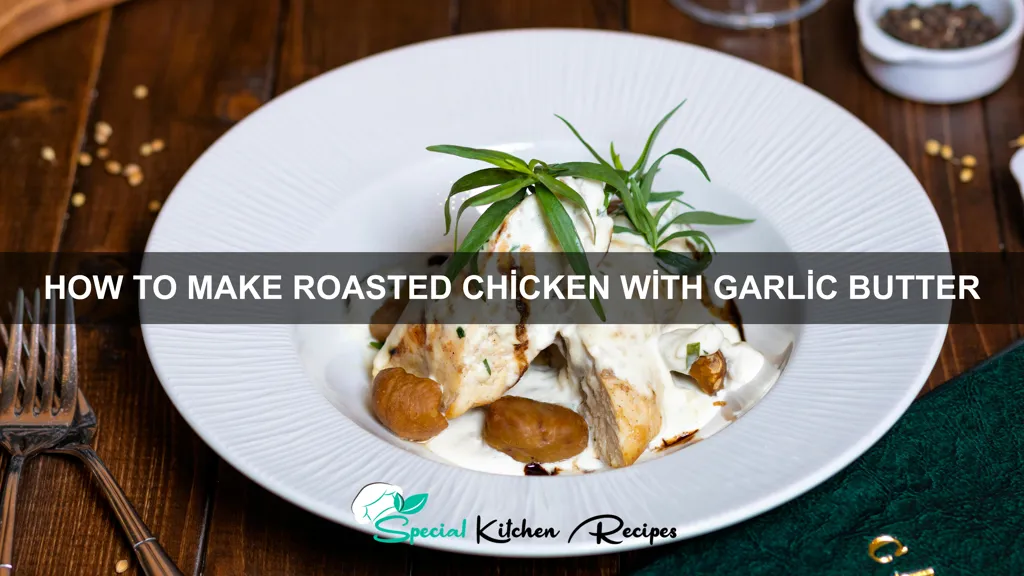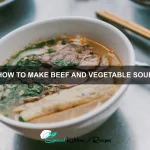The humble roasted chicken, a culinary cornerstone across cultures and continents, boasts a history as rich and flavorful as its finished product. While pinpointing its exact origin is impossible, evidence suggests that the practice of roasting poultry dates back millennia. Archaeological findings indicate that birds were a significant part of early human diets, with roasting being a natural and efficient cooking method. Ancient Egyptians, Romans, and Greeks all enjoyed roasted fowl, showcasing its enduring appeal across diverse civilizations. The simplicity of the method, requiring minimal equipment and readily available ingredients, contributed to its widespread adoption and enduring popularity. Today, it remains a staple in countless households globally, demonstrating its timeless versatility.
The addition of garlic butter elevates the simple roasted chicken to a truly exquisite dish. Garlic, a staple in Mediterranean cuisine for thousands of years, adds a pungent and savory depth, while butter contributes richness and moisture, ensuring a succulent and flavorful result. The combination is a testament to the power of simple ingredients to create a complex and satisfying culinary experience. Interestingly, butter production itself has a fascinating history, evolving from simple churning techniques to the sophisticated processes we see today. Global butter production exceeds millions of tons annually, highlighting its importance in culinary traditions worldwide. While exact statistics on garlic butter’s usage are difficult to obtain, its popularity is undeniable, evident in countless recipes and its frequent appearance on restaurant menus.
Roasted chicken’s cultural significance is profound. It’s a dish that transcends socioeconomic boundaries, appearing on both humble family tables and elegant dinner parties. In many cultures, roasted chicken symbolizes celebration, family gatherings, and comfort. It’s a dish often associated with holidays and special occasions, representing abundance and prosperity. The preparation and sharing of a roasted chicken can be a powerful social ritual, bringing people together and forging connections. This recipe, therefore, offers not only a culinary experience but also a chance to connect with the rich history and cultural significance of this beloved dish. The simple act of preparing and sharing a roasted chicken with garlic butter embodies a timeless tradition, linking us to culinary practices of the past and connecting us to the present.
Ingredients and Measurements
This recipe yields a succulent, flavorful roasted chicken that serves 4-6 people. Precise measurements are crucial for achieving optimal results, so please use a kitchen scale for the most accurate results, especially when measuring the chicken and butter.
For the Chicken:
- 1 (3-4 pound) whole chicken, giblets removed. Ensure the chicken is completely thawed before roasting. A partially frozen chicken will not cook evenly.
- 1 tablespoon kosher salt. Kosher salt is preferred for its larger crystals and less intense flavor compared to table salt. Adjust the amount slightly depending on your salt preference and the saltiness of your butter.
- 1 teaspoon freshly ground black pepper. Freshly ground pepper offers a superior flavor compared to pre-ground.
For the Garlic Butter:
- 1/2 cup (1 stick) unsalted butter, softened to room temperature. Using softened butter ensures a smooth and easy-to-spread consistency. Do not melt the butter.
- 6-8 cloves garlic, minced. Using a garlic press or finely mincing the garlic is key for even distribution of flavor. Too large of garlic pieces will burn before the chicken is cooked through.
- 1 tablespoon fresh lemon juice. Freshly squeezed lemon juice provides a brighter, more vibrant flavor than bottled juice.
- 1 teaspoon dried thyme. Dried thyme is used here for a more concentrated flavor. If using fresh thyme, use about 2 tablespoons.
- 1/2 teaspoon dried rosemary. Rosemary complements the garlic and lemon beautifully. Again, fresh can be substituted, using about 1 tablespoon.
- 1/4 teaspoon cayenne pepper (optional). A pinch of cayenne adds a subtle kick of heat. Omit if you prefer a milder flavor.
Additional Notes:
- Adjust the herbs and spices to your liking. Feel free to experiment with other herbs like parsley or oregano.
- If you prefer a crispier skin, pat the chicken dry with paper towels before seasoning and roasting.
- For a more flavorful roast, consider adding some vegetables such as carrots, potatoes, or onions to the roasting pan.
Equipment List
Creating a succulent, flavorful roasted chicken with garlic butter requires the right tools. This equipment list details everything you’ll need, from preparation to serving, ensuring a smooth and successful cooking process. Proper equipment selection dramatically impacts the final result, so paying attention to these details is crucial.
First, you’ll need a suitable roasting pan. A 12-inch by 18-inch roasting pan is ideal for a standard 3-4 pound chicken, providing ample space for even browning and rendering fat. Avoid using pans that are too small, as this can restrict airflow and lead to uneven cooking. A roasting pan with a rack is highly recommended. The rack elevates the chicken, allowing hot air to circulate underneath, promoting even browning and crispier skin. A rack made of stainless steel or heavy-duty wire is preferable for durability and heat distribution.
Next, for preparation, you’ll need a selection of knives. A sharp chef’s knife (8-10 inches) is essential for patting the chicken dry, trussing (optional), and portioning the cooked chicken. A smaller paring knife (3-4 inches) will be handy for more delicate tasks like mincing garlic. A sturdy meat thermometer is indispensable for ensuring the chicken is cooked to a safe internal temperature of 165°F (74°C). Using a digital thermometer is recommended for accurate and quick readings.
For basting, a basting brush, preferably silicone or heat-resistant nylon, is necessary to evenly distribute the garlic butter mixture over the chicken during roasting. A large bowl (at least 4-quart capacity) will be needed for mixing the garlic butter and for holding the chicken while you prepare it. Finally, for serving, consider oven mitts or heat-resistant gloves to safely remove the hot roasting pan from the oven. Tongs are also helpful for transferring the cooked chicken to a serving platter.
Optional but helpful equipment includes a trussing needle and twine for a more aesthetically pleasing and evenly cooked chicken. A kitchen scale can ensure accurate measurements of ingredients, particularly the butter. While not strictly necessary, a small saucepan can be used to melt the butter for the garlic butter mixture if preferred.
By ensuring you have all the necessary equipment before you begin, you’ll streamline the cooking process and significantly improve the quality of your roasted chicken with garlic butter.
Preparation of Chicken
Choosing the right chicken is crucial for a delicious roast. Opt for a whole chicken weighing approximately 3-4 pounds (1.4-1.8 kg). Avoid chickens that look overly pale or have any discoloration or unpleasant odors. A good quality chicken will have firm, plump flesh and slightly yellow skin.
Once you’ve selected your chicken, the first step is thorough rinsing. Place the chicken in a large bowl and rinse it under cold, running water, inside and out. Make sure to remove any giblets (liver, heart, gizzard) from the cavity. These are usually found in a small packet inside the chicken.
Pat the chicken completely dry with paper towels. This is a very important step. Excess moisture will prevent the skin from crisping properly during roasting. Take your time and ensure all parts of the chicken are thoroughly dried.
Now, it’s time to prepare the chicken for flavor infusion. Using a sharp knife or kitchen shears, loosen the skin from the breast and legs. This will allow the garlic butter to penetrate the meat, resulting in a more flavorful and juicy chicken. Be gentle to avoid tearing the skin.
Next, prepare the garlic butter. You’ll need approximately 1/2 cup (1 stick) of unsalted butter, softened, and 4-6 cloves of garlic, minced. Combine the softened butter and minced garlic in a small bowl. For extra flavor, consider adding fresh herbs such as rosemary, thyme, or sage to your garlic butter. You can also add a pinch of salt and freshly ground black pepper.
Generously rub the garlic butter mixture all over the chicken, making sure to get under the loosened skin of the breast and legs. Don’t be shy with the butter! The more you use, the more flavorful your chicken will be. You can also place some of the garlic butter mixture inside the cavity of the chicken.
Finally, place the prepared chicken on a rack set inside a roasting pan. This allows for even air circulation and ensures the chicken roasts evenly and crisps nicely. The rack also helps to collect any rendered fat in the bottom of the pan.
Making the Garlic Butter
Creating the flavorful garlic butter is the crucial first step in ensuring your roasted chicken is juicy and bursting with flavor. We’ll be making a compound butter, which means we’re infusing softened butter with aromatic ingredients. For this recipe, we’ll need 1/2 cup (1 stick) of unsalted butter, softened to room temperature. This is vital; if your butter is too cold, it will be difficult to incorporate the garlic smoothly, and if it’s melted, the butter will separate and become grainy.
Next, we need our garlic. For a robust garlic flavor, use 4-5 large cloves of garlic, minced finely. You can use a garlic press, a microplane, or even a sharp knife, but ensure the garlic is finely minced to distribute the flavor evenly throughout the butter. Avoid using a food processor, as this can result in a pasty texture. If you want a milder garlic flavor, use 2-3 cloves instead.
In a medium bowl, combine the softened butter and minced garlic. Using a spatula or fork, gently mix the two ingredients together until they are thoroughly combined and smooth. Avoid overmixing, as this can incorporate too much air and lead to a grainy texture. The process should take only a minute or two.
Now, let’s add some fresh herbs for an extra layer of flavor. 1 tablespoon of fresh parsley, finely chopped, and 1 tablespoon of fresh thyme leaves, also finely chopped, work wonderfully. If you prefer different herbs, such as rosemary or chives, feel free to substitute. Again, gently incorporate the herbs into the butter mixture, ensuring they are evenly distributed.
Finally, season the garlic butter with a pinch of salt and freshly ground black pepper. Start with 1/4 teaspoon of salt and 1/8 teaspoon of black pepper and adjust to your preference. Taste the butter and adjust the seasoning as needed. You can also add a pinch of red pepper flakes for a little heat if you desire.
Once you’ve achieved your desired flavor profile, your garlic butter is ready! You can use it immediately to baste your chicken or store it in the refrigerator for later use. If storing, place the butter in an airtight container and refrigerate for up to 3 days. Remember to bring it back to room temperature before using.
Roasting the Chicken
Once your chicken is prepped (see previous section), it’s time to roast it to juicy, flavorful perfection. Preheat your oven to 425°F (220°C). This high initial temperature helps crisp the skin beautifully. You’ll need a roasting pan large enough to comfortably hold the chicken without overcrowding. A rack placed inside the pan is highly recommended; it allows for even heat circulation and prevents the chicken from stewing in its own juices, resulting in a crispier skin and evenly cooked meat.
Pat the chicken dry with paper towels. This is a crucial step often overlooked! Excess moisture prevents the skin from browning properly. Generously rub the chicken, both inside and out, with your prepared garlic butter. Ensure you get it under the skin of the breasts and legs for extra flavor. About 1/2 cup of garlic butter should be sufficient for a 4-5 pound chicken; adjust according to the size of your bird. Don’t be shy with the butter!
Place the chicken on the rack in your roasting pan. Tuck the wings behind the back to prevent them from burning. You can also tie the legs together with kitchen twine for a more aesthetically pleasing presentation and to ensure even cooking. However, this is optional. Place the roasting pan in the preheated oven.
Roast the chicken for approximately 1 hour and 15 minutes to 1 hour and 30 minutes, or until a meat thermometer inserted into the thickest part of the thigh registers 165°F (74°C). Always use a meat thermometer; it’s the most reliable way to ensure the chicken is cooked through and safe to eat. Avoid relying solely on visual cues, as cooking times can vary depending on the size and weight of the chicken.
During the last 15-20 minutes of cooking, you can baste the chicken with the pan juices for extra moisture and flavor. This will also help to further crisp the skin. Watch the chicken closely during the last 15 minutes to prevent burning. If the skin is browning too quickly, you can loosely tent the chicken with foil.
Once the chicken reaches the safe internal temperature, remove it from the oven and let it rest for at least 15-20 minutes before carving. This allows the juices to redistribute throughout the meat, resulting in a more tender and flavorful chicken. Resting is a critical step often neglected, but it makes a big difference in the overall quality of your roasted chicken.
After resting, carve the chicken and serve immediately. Enjoy your delicious, perfectly roasted chicken with garlic butter!
Checking for Doneness
Ensuring your roasted chicken is perfectly cooked is crucial for both safety and flavor. Undercooked chicken is dangerous, while overcooked chicken is dry and tough. There are several methods to check for doneness, and using a combination is recommended for best results.
The most reliable method is using a meat thermometer. Insert the thermometer into the thickest part of the thigh, avoiding the bone. The internal temperature should reach 165°F (74°C). Do not rely solely on the color of the juices; clear juices are not always a guarantee of doneness.
Another indicator is the leg movement. Gently wiggle the leg. If it moves easily and feels loose in the socket, it’s likely cooked through. A tightly held leg suggests further cooking is needed. Remember, this is a supplementary check, not a primary one.
Visual cues can also be helpful, although they should be used in conjunction with other methods. The skin should be golden brown and crispy. The juices should run clear when pierced with a fork or knife. However, rely on the temperature reading above all else. The color of the juices can be misleading, especially with darker-meat chickens.
For a 4-5 pound chicken, roasting time typically ranges from 1 hour 15 minutes to 1 hour 45 minutes at 375°F (190°C). However, oven temperatures can vary, so always use a meat thermometer for accuracy. Start checking the temperature about 15 minutes before the estimated cooking time is finished. This allows you to adjust the cooking time if needed.
If the chicken is not yet cooked through after the estimated time, continue roasting in 15-minute increments, checking the temperature each time. Never leave the chicken unattended while it’s roasting. Once the internal temperature reaches 165°F (74°C), remove the chicken from the oven and let it rest for at least 10-15 minutes before carving. This allows the juices to redistribute, resulting in a more tender and flavorful bird.
Remember, safety is paramount. Using a meat thermometer is the most accurate and reliable way to ensure your roasted chicken is cooked to a safe internal temperature. Don’t hesitate to err on the side of caution – it’s always better to slightly undercook and reheat than to risk foodborne illness.
Recommendations
For optimal flavor and texture, allow the roasted chicken to rest for 10-15 minutes after cooking before carving. This allows the juices to redistribute, resulting in a more tender and flavorful bird. Carve the chicken against the grain for extra tenderness.
Serving suggestions are plentiful! This roasted chicken is delicious on its own, but it also pairs wonderfully with a variety of sides. We recommend serving it with classic accompaniments like roasted vegetables (potatoes, carrots, broccoli), a fresh salad with a light vinaigrette, or creamy mashed potatoes. For a heartier meal, consider serving it with crusty bread to soak up the delicious garlic butter drippings.
Leftover roasted chicken can be stored in an airtight container in the refrigerator for up to 4 days. You can repurpose leftover chicken in salads, soups, sandwiches, or quesadillas. Freezing is also an option; store the chicken in a freezer-safe container or bag for up to 3 months.
Complementary dishes to enhance your roasted chicken experience include a simple green bean casserole, a vibrant cranberry sauce (especially during the holidays), or a flavorful mushroom gravy made with the pan drippings. A light and refreshing citrus salad would also cut through the richness of the garlic butter.
Nutritional Information (per serving, approximate, will vary based on chicken size and ingredients used): Calories: Approximately 350-450; Protein: 30-40g; Fat: 20-30g; Carbohydrates: 5-10g. This is an estimate and does not include side dishes. For a more precise nutritional breakdown, use a nutrition calculator and input your specific ingredients and quantities.
Important Note: Always ensure the chicken is cooked to an internal temperature of 165°F (74°C) to ensure food safety. Use a meat thermometer to check the temperature in the thickest part of the thigh.





